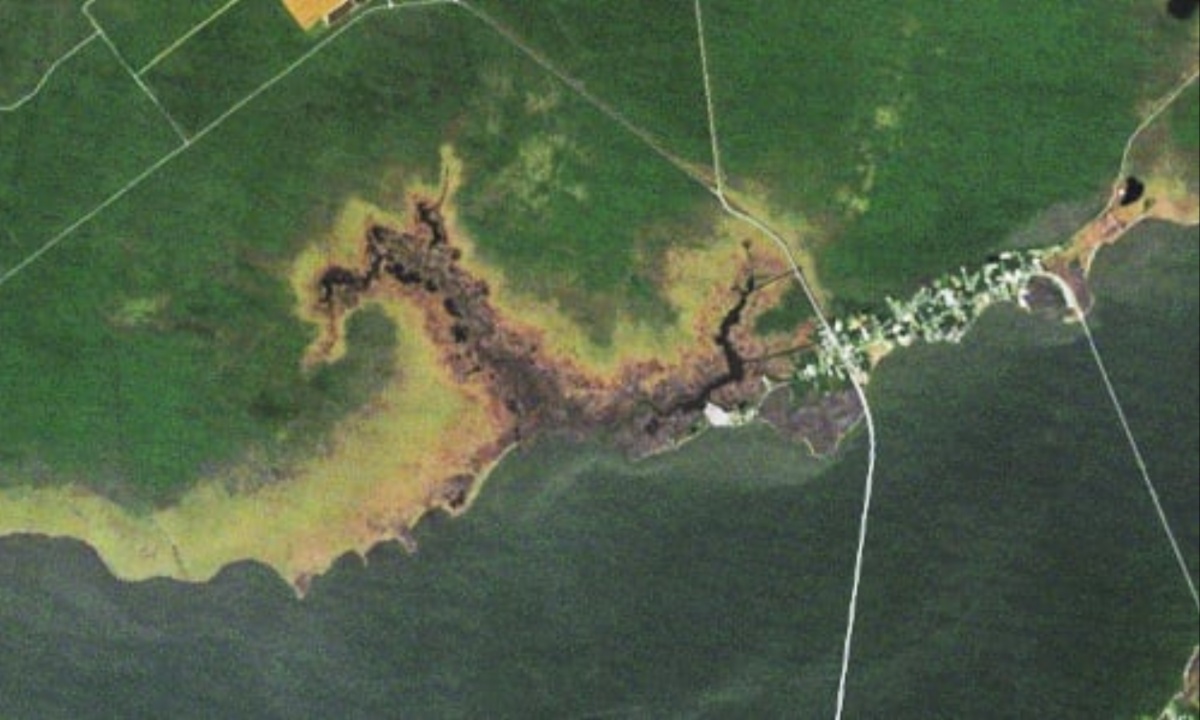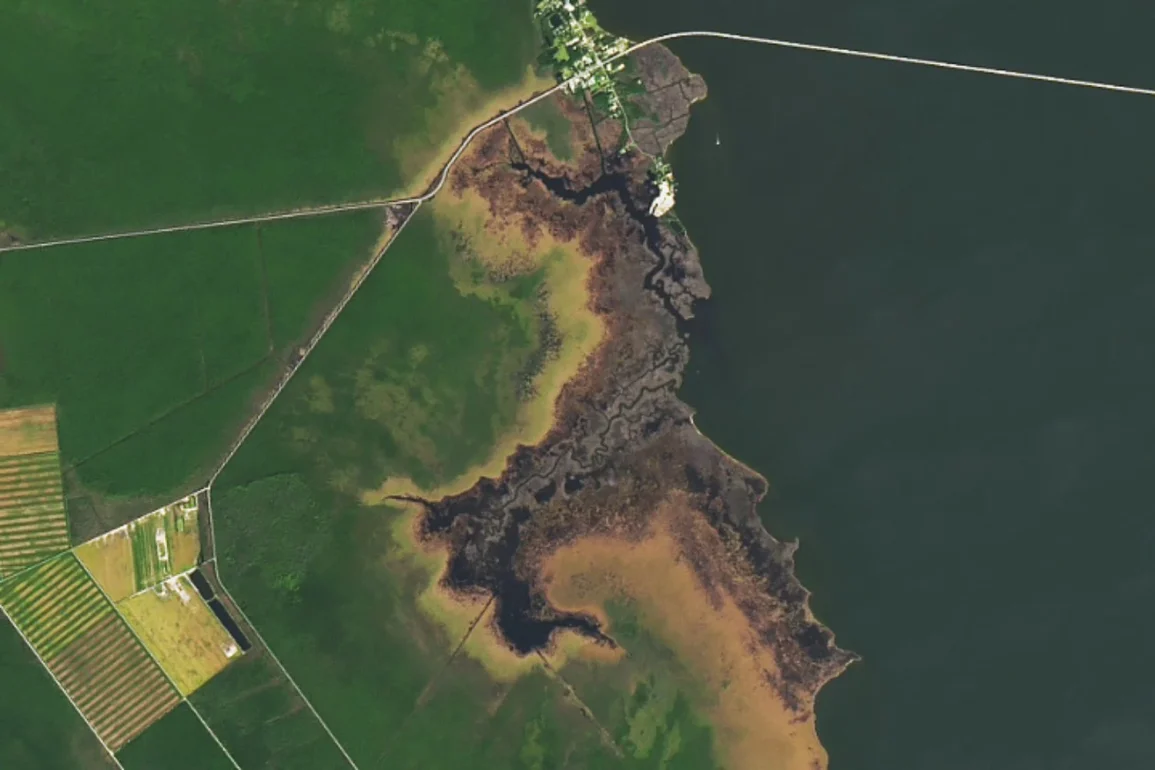NASA Earth Observatory has released eerie satellite images showing the spread of “ghost forests” along North Carolina’s coast, specifically within the Alligator River National Wildlife Refuge. Once thriving with dense bald cypress trees, the area has seen a shift over the past two decades as more trees die, their bark peeling away and trunks standing starkly against their surroundings.
These “ghost forests” illustrate the impacts of environmental changes in coastal regions, leaving behind skeletal remains where vibrant vegetation once stood.
Ghost forests develop when saltwater infiltrates and kills large numbers of trees that depend on freshwater. Coastal areas are particularly vulnerable to this phenomenon as saltwater seeps into what were once freshwater wetlands, effectively choking the trees that cannot survive in the saline environment. This shift is happening not only in North Carolina but along the entire East Coast, from Massachusetts to the Carolinas, as saltwater encroachment transforms freshwater habitats.

NASA’s Landsat satellites have captured the transformation of the Alligator River forest from 2005 to 2024, showing the spread of ghost forests over nearly 20 years. Between 1985 and 2019, approximately 11% of the Alligator River refuge has turned into a ghost forest, with the advancing line of dead trees resembling the browning edge of a ripening avocado. This steady transformation highlights the drastic changes over a relatively short time due to rising salinity levels in coastal environments.
The situation is compounded by the rise in sea levels along North Carolina’s coast, which is currently experiencing an increase of about 0.15 inches per year—three times faster than the global average. While marshes can adapt by moving slowly inland as sea levels rise, cypress forests are boxed in by human developments like farmland, which restrict their ability to move and adapt.
This confinement contributes to mass die-offs, a phenomenon that ecologist Emily Bernhardt from Duke University describes as the “squeezing” of these iconic freshwater areas into extinction.
NASA also notes that climate change isn’t solely responsible for the expansion of ghost forests. In 2011, a significant die-off followed a drought and Hurricane Irene, which forced salty water further inland. With recent increases in hurricane activity in the southeastern U.S., the future could see even more ghost forests as saltwater continues to encroach. These spectral images serve as a stark reminder, especially during Halloween, of the growing challenges that face coastal forests in the face of ongoing environmental changes.

